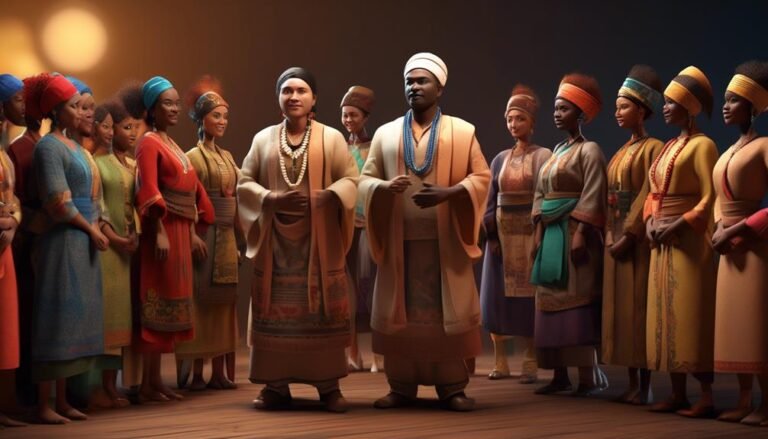What Are the Media of Communication?
Imagine this scenario: You wake up in the morning and reach for your phone to check your social media accounts. As you scroll through your news feed, you come across various articles and videos that catch your attention.
You then turn on the television and watch the morning news, where you are informed about the latest happenings around the world.
Later in the day, you receive a printed newsletter from your workplace, updating you on important company news and events.
In this digital age, we are constantly surrounded by different forms of communication media. But what exactly are these media, and how do they shape the way we connect with others and consume information?
Join this discussion to explore the various media of communication and their impact on our lives.
Key Takeaways
- Print media, broadcasting media, digital media, social media, and interpersonal communication are different forms of media used for communication.
- Print media remains relevant and is a significant source of revenue for the newspaper industry despite the rise of digital media.
- Broadcasting media reaches a large audience through audio and visual platforms, such as radio and television.
- Digital media has transformed communication and access to information, and digital marketing and online advertising are essential tools for businesses.
Print Media
Print media plays a vital role in the dissemination of information and is widely utilized for its tangible and accessible nature. One significant aspect of print media is print advertising, which has been a cornerstone of the newspaper industry for decades.
Print advertising refers to the placement of advertisements in newspapers, magazines, and other printed publications. This form of advertising allows businesses to reach a wide audience and target specific demographics.
Newspaper industry heavily relies on print advertising as a source of revenue, enabling them to continue providing news and information to the public. Despite the rise of digital media, print advertising still holds value for businesses looking to reach a local audience or establish a tangible presence.
It remains a key component of print media's enduring relevance in the modern world.
Broadcasting Media
Broadcasting media plays a crucial role in the dissemination of information and is widely utilized for its ability to reach a large audience through various audio and visual platforms. Unlike traditional media such as print, broadcasting media uses radio and television to transmit information and entertainment. It allows for real-time communication, making it ideal for news reporting, live events, and interviews. Broadcasting media also provides a platform for advertising and marketing campaigns, reaching millions of viewers and listeners simultaneously. To further illustrate the significance of broadcasting media, consider the following table:
| Broadcasting Media | Traditional Media |
|---|---|
| Radio | Newspapers |
| Television | Magazines |
| Podcasts | Books |
| Webcasts | Brochures |
| Streaming services | Flyers |
Through these platforms, broadcasting media continues to revolutionize the way information is shared and consumed.
Digital Media
Digital media has transformed the way we communicate and access information in our modern society. With the advent of the internet, digital marketing and online advertising have become essential tools for businesses to reach their target audience.
Digital marketing refers to the promotion of products or services using digital technologies, such as websites, social media, email, and mobile apps. This form of marketing allows businesses to target specific demographics, track customer behavior, and measure the effectiveness of their campaigns.
Online advertising, on the other hand, involves displaying promotional content on websites, search engines, or social media platforms to attract potential customers. It offers a cost-effective and efficient way to reach a large audience and generate leads.
In today's digital age, digital marketing and online advertising play a crucial role in the success of businesses and their ability to connect with consumers.
Social Media
Social media has revolutionized the way we connect and communicate with others.
Social media platforms like Facebook, Twitter, and Instagram have become powerful tools for individuals and businesses alike.
Social media marketing has become a crucial part of any marketing strategy, allowing companies to reach and engage with their target audience on a more personal level.
By utilizing social media platforms, businesses can promote their products or services, build brand awareness, and drive traffic to their websites.
Additionally, social media influencers play a significant role in shaping consumer behavior. These individuals have large followings and can influence their audience's purchasing decisions through sponsored content and product endorsements.
Social media has transformed the way we interact with others and has become a vital component of modern communication.
Interpersonal Communication
As social media transforms the way we connect and communicate, it also impacts our ability to engage in interpersonal communication. In today's digital age, it's important to recognize the value of face-to-face interactions and the role they play in effective communication.
Here are three key aspects of interpersonal communication:
- Nonverbal Communication: Interpersonal communication involves more than just words. Nonverbal cues such as body language, facial expressions, and tone of voice can convey meaning and emotions that enhance understanding.
- Active Listening: Effective interpersonal communication requires active listening skills. This means being fully present, paying attention to the speaker, and providing relevant responses or feedback.
- Empathy: Interpersonal communication is about connecting with others on an emotional level. Empathy allows us to understand and share the feelings of others, fostering deeper connections and creating a more meaningful exchange of ideas.
Conclusion
So there you have it, a quick overview of the various media of communication. From the traditional print media to the widespread use of social media, we're constantly surrounded by different channels to transmit and receive information.
Just like a tapestry of voices, these media intertwine and shape our understanding of the world.
So next time you pick up a newspaper or scroll through your news feed, remember the power and diversity of the media that surround you.







